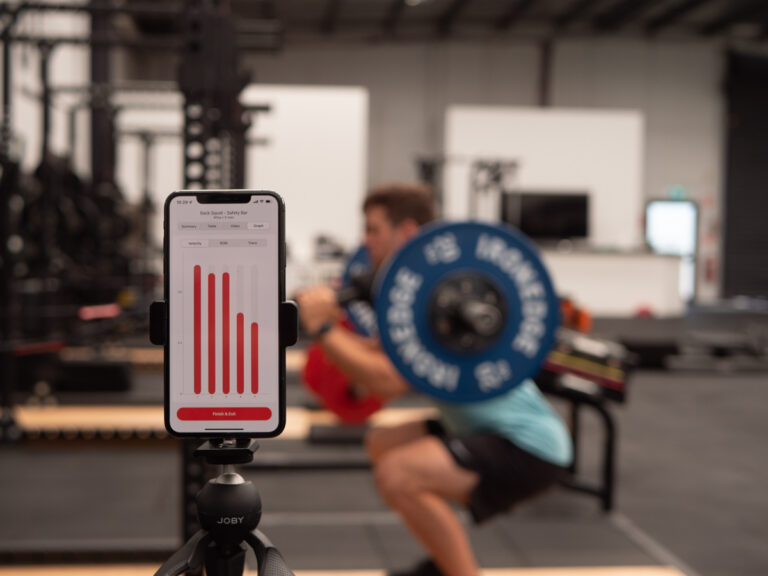
An Introduction to Velocity Based Training (VBT) for Powerlifters
In the world of strength training, we're constantly searching for more objective ways to measure our performance. While RPE is a fantastic tool for autoregulation, it's still subjective. Enter Velocity Based Training (VBT), a modern, data-driven approach that uses bar speed to provide instant, objective feedback on your strength and readiness. This guide will introduce you to the concepts of VBT and how it can make your powerlifting training more precise and effective.

What is Velocity Based Training?
VBT is a training methodology that uses technology (like linear position transducers or accelerometers) to measure the speed at which you move a barbell. The core principle is that there is a direct, inverse relationship between the load on the bar and the speed at which you can lift it.
- A heavy weight moves slowly.
- A light weight moves quickly.
By tracking your bar speed, you can get an objective measure of your effort and performance on any given day.
Why Should Powerlifters Care About VBT?
- Objective Autoregulation: VBT is the ultimate tool for autoregulation. If you're fatigued, your bar speed will be slower at a given weight. VBT allows you to adjust the load to match a target velocity, ensuring you're always training at the correct intensity for your daily readiness.
- More Accurate 1RM Prediction: Your speed on your final warm-up or first work set can be used to very accurately predict your 1-Rep Max (1RM) for that day without having to perform a true max. This is known as establishing a "Minimal Velocity Threshold," the speed at which you lift your 1RM.
- Improved Intent and Technique: VBT provides instant feedback. It encourages you to move the bar with maximum intent and speed on every rep, which is crucial for developing explosive strength. It can also help diagnose technical flaws; if your bar speed suddenly drops mid-rep, it's a clear indicator of a sticking point.
- Fatigue Management: You can set "velocity loss" cut-offs. For example, you might decide to end a set once your bar speed drops by more than 20% from your fastest rep. This is a precise way to manage fatigue and ensure all your reps are high quality.
This data-driven approach is being adopted by many high-level strength institutions and is discussed in depth by resources like Simplifaster, a leading US-based sports science publication.
How to Get Started with VBT
- The Technology: You'll need a VBT device. Options range from affordable camera-based apps to more accurate devices like those from Enode, Vitruve, or GymAware.
- Establish Your Velocity Profile: For the first few weeks, simply gather data. Track the velocity of your sets at different percentages of your 1RM. This will help you establish your personal velocity profile for each lift.
- Start with One Metric: Don't get overwhelmed. Start by using VBT for one purpose, such as monitoring the velocity of your top set to gauge your daily strength.
Velocity Based Training is the next evolution in smart strength training. It takes the principles of autoregulation and makes them objective and precise. While it's not a replacement for hard work and good programming, VBT provides an unparalleled level of insight into your training, allowing you to manage fatigue, optimize intensity, and push your performance to the next level with data-driven confidence.








